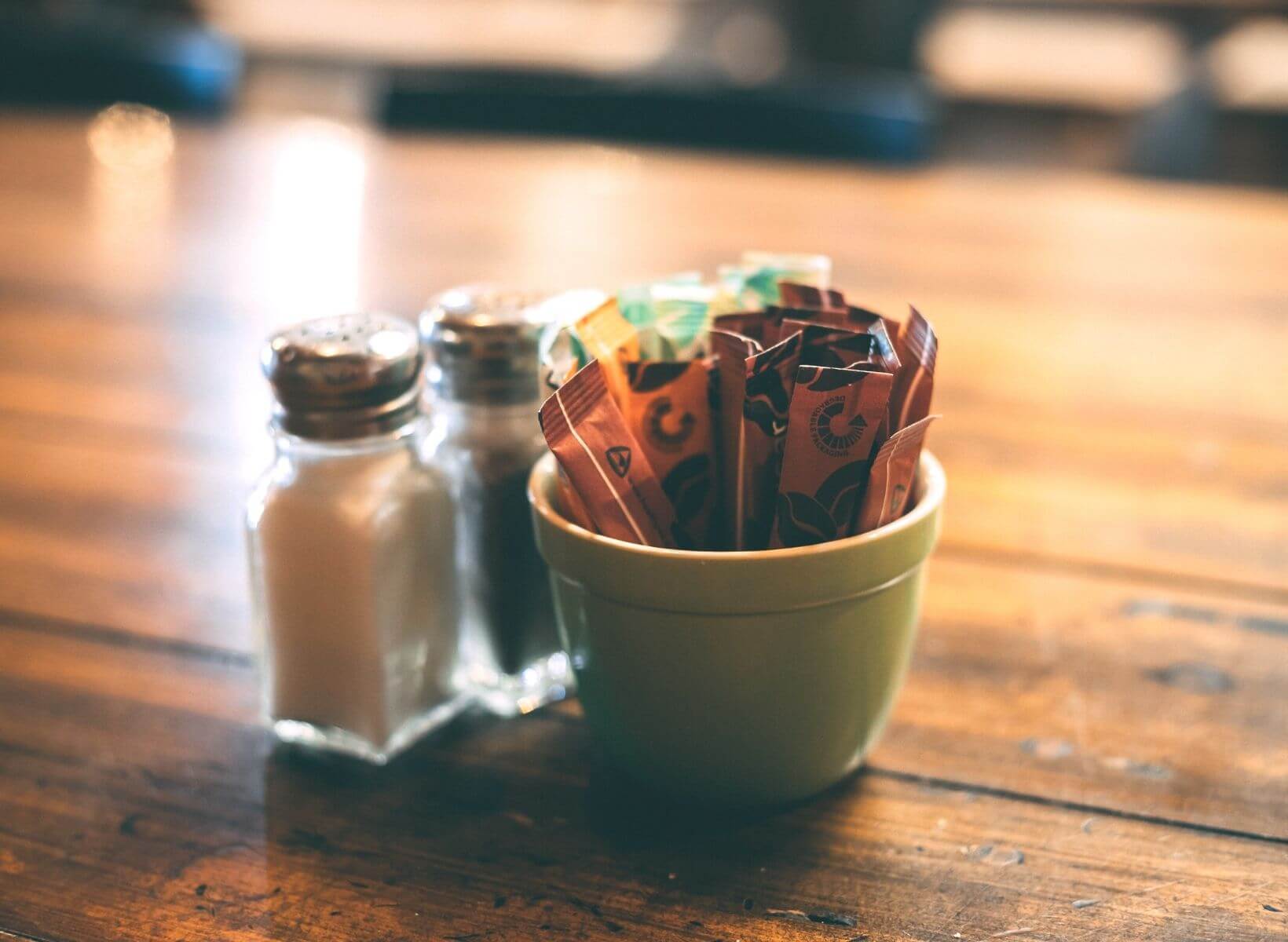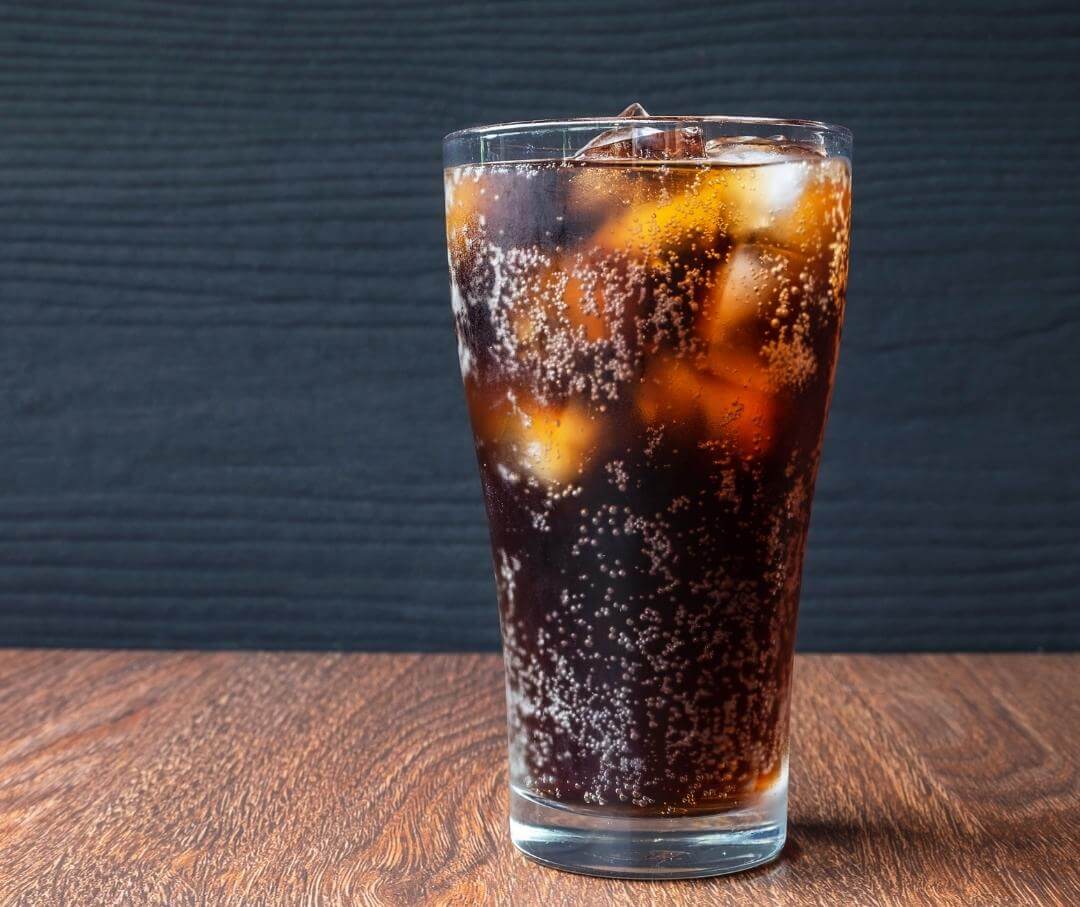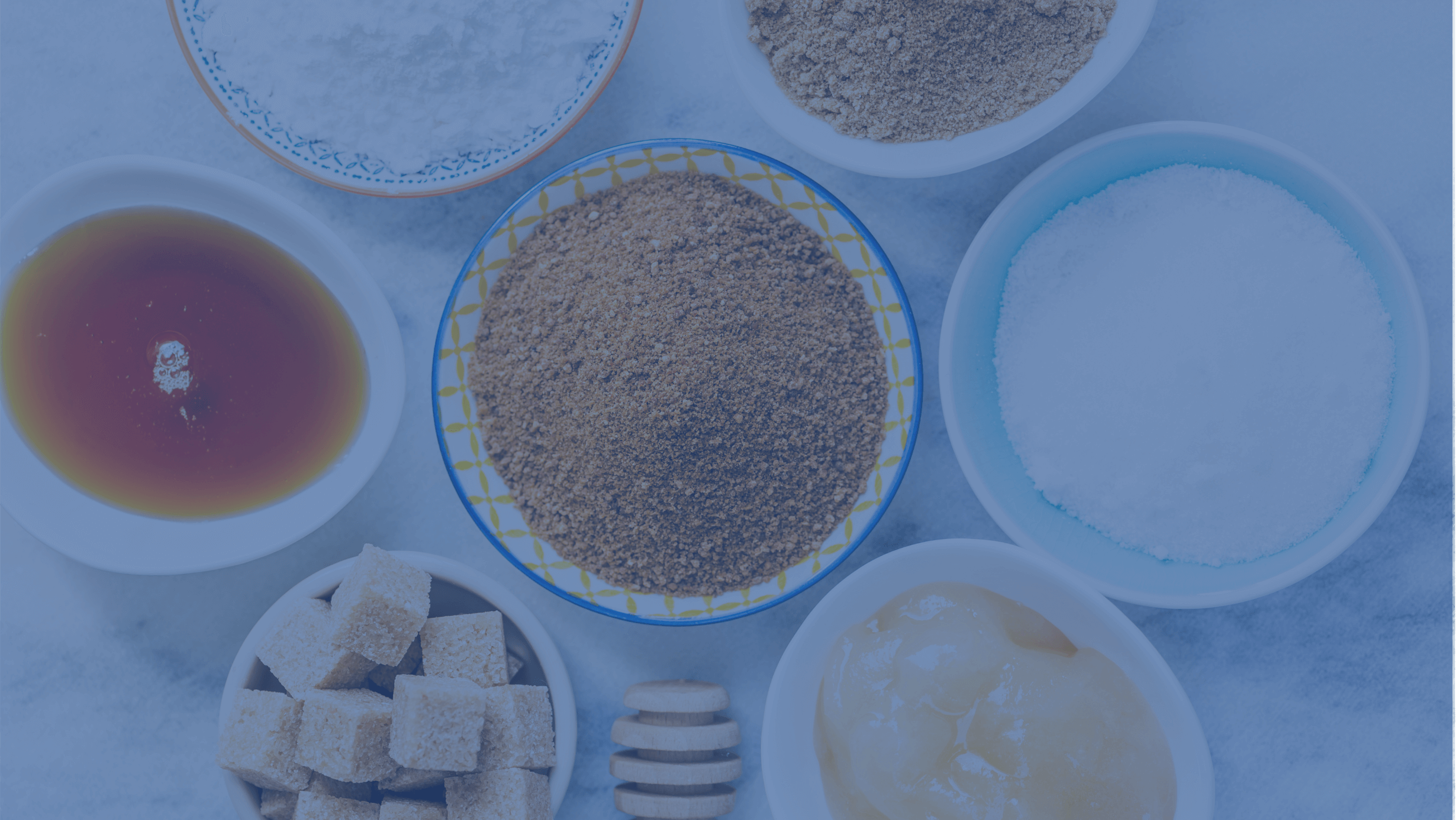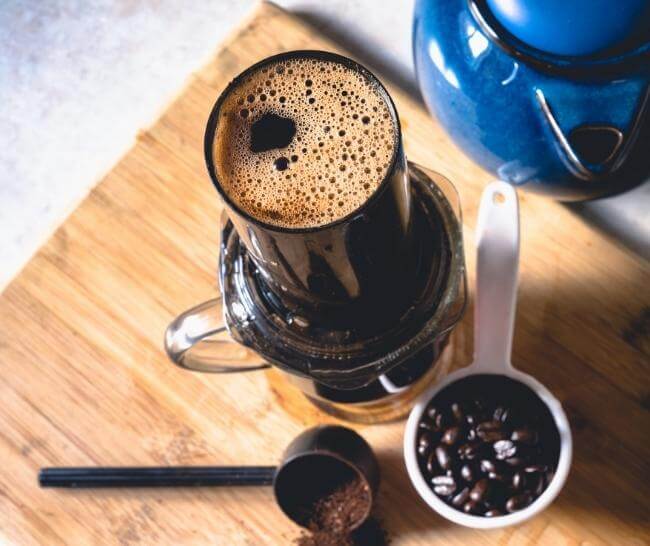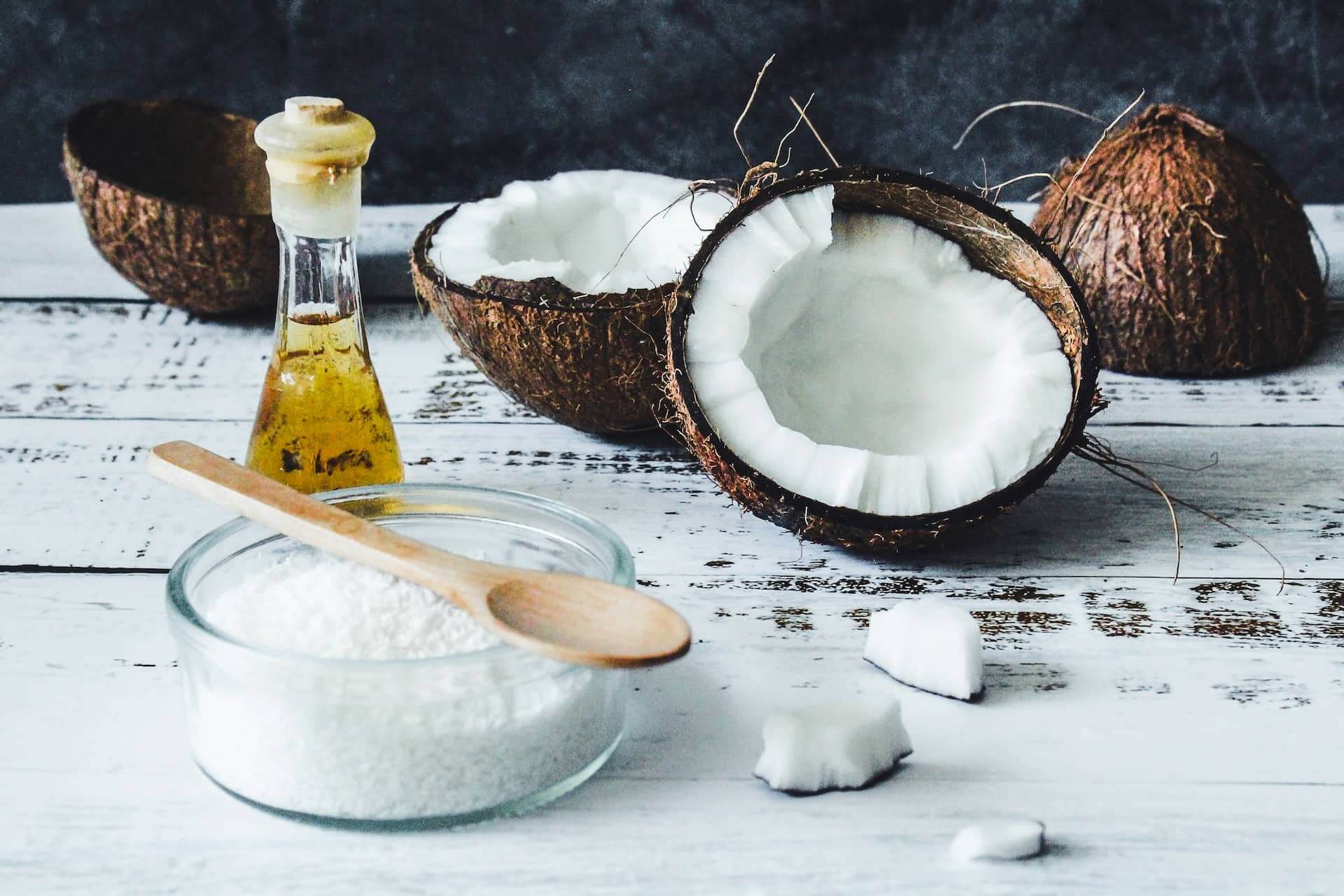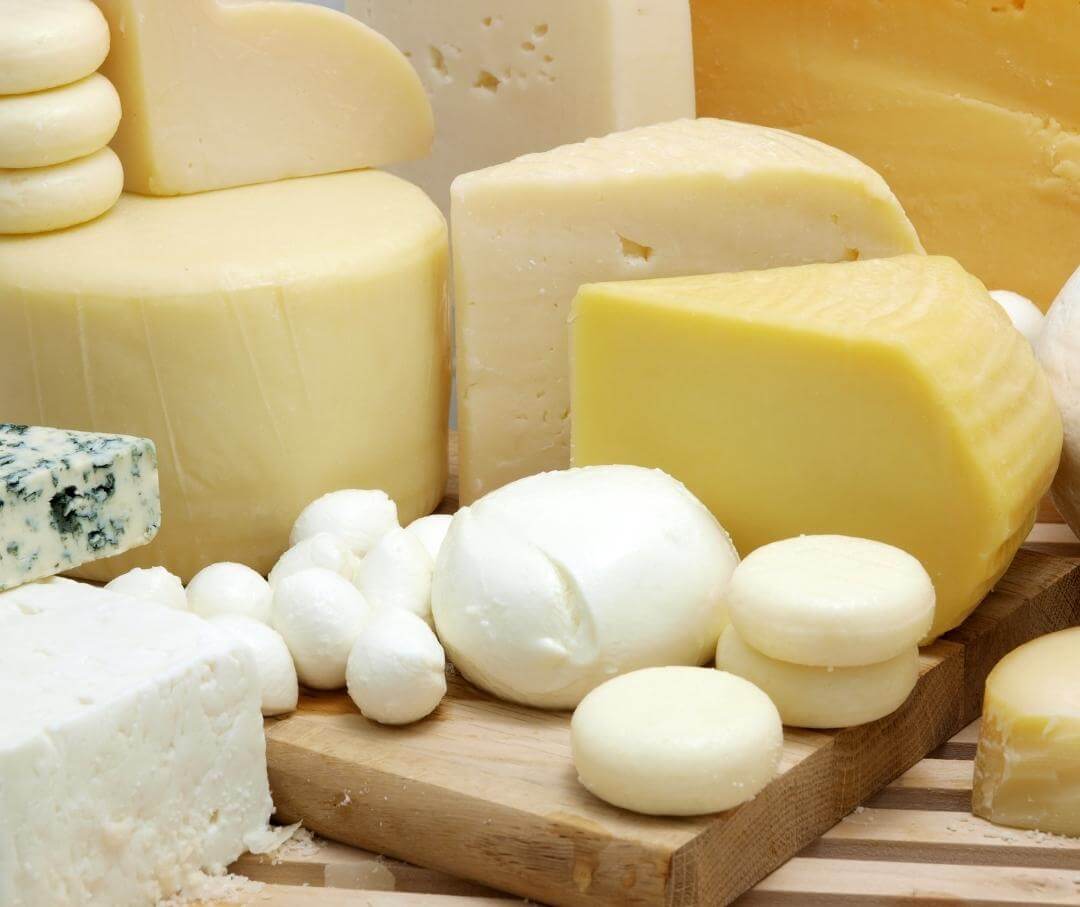A calorie-free sugar alternative with a glycemic index of 0 that’s relatively inexpensive and tastes sweeter than sugar and doesn’t raise your blood sugar? Stevia checks all of these boxes.
If you have a sweet tooth, have tried to kick the sweetened beverage habit but switched to “zero”, “light”, or “2.0” versions of drinks, you may have tasted stevia in Bai, Zevia, Gatorade G2, Simply Light drinks, Vitamin Water Zero, and more.
Stevia leaf comes from a plant in the sunflower family found in Asia, North and South America. Used in its pure leaf form, which tastes sweet when it hits the tongue but leaves a whisper of bitterness, stevia can be considered a plant-based natural sweetener.
This zero-calorie, non-nutritive sugar substitute is generally regarded as safe to consume<sup>1</sup>; the FDA recommended daily amount is 4 mg/kg of body weight.
Does Stevia Raise Blood Sugar?
Research suggests that it does not when consumed on its own.
A recent review of scientific research shows that stevia poses no adverse effects on metabolic health<sup>2</sup>. Studies suggest that stevia may help restore normal pancreatic functions, helping people with diabetes to regulate their blood sugar levels.
Manufacturers have developed various stevia formulations using stevia rebaudiana, a species of the plant that contains Rebaudioside A (Reb-A), the sweetest component of the leaf, to remove the unpalatable aftertaste. Many stevia-sweetened products contain mostly extracted Reb-A with stevioside, a white crystalline compound in stevia that tastes up to 300 times sweeter than table sugar. Some brands also add sugar alcohols, which could cause tummy troubles for some people if consumed in large quantities.
The short and sweet of it: Pure stevia leaf provides the most natural, least processed form of sweetness but you have to adjust to the bitter aftertaste. To get a texture, taste, and look that’s closer to white sugar, Reb-A is often combined with erythritol (sugar alcohol), dextrose (sugar made from corn), or maltodextrin (polysaccharide made from corn, rice, wheat, or potato starch).
One thing to note: A review of scientific literature suggests that non-nutritive sweeteners (stevia is one) can trigger physiological responses associated with carb digestion and metabolism, such as the release of insulin and incretin hormones, which work to reduce blood glucose. Scientists found that non-nutritive sweeteners may not lower blood sugar levels significantly<sup>3</sup>.
What does this mean for you? Non-nutritive sweetener use can be fine in moderate amounts and preferable to sugar, which we know raises blood glucose.
Stevia vs. Sugar
White sugar, table sugar, or sucrose seems to sparkle in the right light and adds blissful sweetness our bodies seem wired to crave. To test this in the wild, just try taking away a kid’s Capri Sun. That sweet face can morph into a demon’s snarl and launch a protest similar to an addict’s<sup>4</sup>.
Some research supports the idea that sugar can be addictive<sup>5</sup> because of the way it stimulates the reward system in our brains. Whether it’s actually the sugar or just high calories that we find so rewarding, the point is: Many high-calorie foods contain added sugar. If you’ve ever eaten several slivers of pie only to discover, with surprise, that you ate half of a pie bit by bit, you know that caloric, sugar-sweetened foods are hard to quit.
The science: One study compared the impact of stevia and sugar consumption on 19 healthy, lean people and 12 obese participants. Those who had a snack sweetened with sugar prior to meals reported no change in hunger or satiety levels despite eating 203 extra calories before their meals. Those who consumed a snack sweetened with stevia prior to meals didn’t eat more at meals to compensate for the smaller amount of calories in the stevia snack. The stevia group also had lowered post-meal glucose and insulin levels<sup>6</sup> compared to the sugar group.
The short and sweet of it: If you want to lose weight or maintain weight lost, stevia can add the sweetness you might miss but doesn’t appear to affect negatively the hormones that regulate hunger and feelings of fullness.
So it’s no surprise that sugar raises your blood sugar. Let’s level the playing field and pit stevia against other popular sweeteners (including sugar alcohols) to see how they compare.
{{mid-cta}}
Stevia vs. Monk Fruit
Monk fruit, commonly known as luo han guo, is an herb grown in the mountain forests of Guangxi province in China and in northern Thailand. Traditionally used medicinally to treat coughs, colds, sore throats, and constipation, the mongroside extract of monk fruit is 300 times sweeter than sugar without the extra calories.
The Western demand for low-carb, keto, and diabetic-friendly products that also taste sweet has made monk fruit easier to find in the U.S., but its relative rarity keeps the price tag higher than some other natural sweeteners.
The science: One study on 10 healthy males found that swapping a sugar-sweetened drink with one flavored with monk fruit resulted in a minimal impact on glucose for 24 hours<sup>7</sup> after consumption.
A scientific paper states that monk fruit enhances the rate of blood glucose uptake<sup>8</sup> and shows supporting research that mogroside extract of monk fruit can help prevent hyperglycemia and other complications in diabetics. The paper also highlights studies that positively associate monk fruit extract with the prevention and management of some chronic diseases and lifestyle-related health problems.
The short and sweet of it: Trendy among the keto crowd, monk fruit adds sweetness to treats-that-aren’t-really-cheats, sauces, and protein or collagen powders in a way that doesn’t raise blood sugar and may even convey some added health benefits.
Stevia vs. Sucralose
The most popular form of sucralose is Splenda, found in those bright yellow packages tucked into the sugar cubby next to the creamer on the tables of most diners, dives, and chain pancake houses across the country.
Although sucralose contains zero calories, one packet of Splenda contains 3 calories and 0.9 grams of carbs because it’s formulated with sucralose, dextrose, and maltodextrin. Dextrose (50 grams) has a glycemic index of 96; 50 grams of maltodextrin has a GI of 110. Keep in mind that you’re not dumping 50 grams of dextrose and maltodextrin plus sucralose in your coffee from one packet of Splenda. Still, the added sugar substitutes could impact your blood sugar, depending on how much you consume.
Approved for use as a general-purpose sweetener<sup>9</sup>, sucralose can decompose at high temperatures<sup>10</sup> and form chloropropanols and dioxins, potentially toxic compounds. A word to the wise: Don’t bake with it or use it to sweeten sauces you plan to expose to high temperatures (such as the grill or an oven).
The science: One study tested how sucralose impacted oral glucose tolerance test results in obese, insulin-sensitive adults. Consuming sucralose 10 minutes before the glucose drink caused a greater incremental increase in peak blood glucose, greater peak insulin secretion, and a decrease in insulin clearance<sup>11</sup> than when the same subjects drank only water 10 minutes before the test.
Another month-long study in men with normal glucose metabolism showed that no statistically significant differences to baseline fasting glucose, insulin, or oral glucose tolerance test<sup>12</sup> results were found between the sucralose and placebo groups.
A review of scientific studies suggests that a limitation of the types of trials mentioned above could be a lack of control of the participants’ history of low-calorie sweetener use.
One study investigated the effect of consuming sucralose regularly for two weeks in healthy, normal-weight participants who didn’t consume many low-calorie sweeteners before the trial. Sucralose consumption decreased insulin sensitivity by about 18%<sup>13</sup> and showed a 16% increase in the acute insulin response to glucose.
The short and sweet of it: Splenda and generic versions of sucralose contain a blend of sucralose, dextrose, or maltodextrin (or a combo of the three) so, while pure sucralose may contain zero calories and a glycemic index of 0, these blended sugar substitutes may not. It’s questionable whether sucralose or Splenda can raise your blood sugar, as studies conducted on different populations show different results.
Stevia vs. Erythritol
A sugar alcohol touted as offering the closest taste and texture to sugar without the negative blood sugar-raising and caloric consequences, erythritol is created when a type of yeast ferments glucose from wheat or corn starch.
Sugar alcohols move undigested to the large intestine, where they’re fermented by bacteria in the gut microbiota—this can cause bloating, diarrhea, and gas in some people. Erythritol is mostly absorbed in the small intestine and flushed out<sup>14</sup> in urine, making this sugar alcohol more tolerable for most although some people may still experience tummy upset if they consume erythritol in large amounts.
The science: Erythritol does not appear to raise blood sugar or insulin. One very small study on healthy middle-aged men found that erythritol did not affect glucose, insulin<sup>15</sup>, free fatty acids, or cholesterol. Other research states that erythritol has virtually no effect on glucose or insulin<sup>16</sup>, and can provide a rewarding, satiating alternative to sugar.
The short and sweet of it: Erythritol does not appear to raise blood sugar or insulin, and may provide less stomach upset than other sugar alcohols since the majority of it is absorbed in the small intestine and excreted through urine. It has about 70% of the sweetness of sugar, which can be a good thing for those transitioning from sugar-sweetened drinks and foods and needing to readjust their palates.
Stevia vs. Aspartame
An older-school artificial sweetener better known under the brand Equal, aspartame is broken down when heated so it’s used in low- or no-heat applications to sweeten drinks, prepared foods, gum, and even some medicines.
Speculation about whether aspartame causes cancer may still circulate the internet, initiated by an Italian study conducted on rats. No consistent scientific links in studies on humans associate aspartame use with cancer.
The FDA concluded that general use of aspartame is safe<sup>17</sup>.
The science: A study looked at how different amounts of aspartame consumed daily for three months affected blood glucose and appetite after consumption. Researchers concluded that two servings of aspartame per day showed no impact on glucose, insulin, appetite, or bodyweight<sup>18</sup> in healthy, lean adults.
Another study illustrates that aspartame is associated with increased fasting glucose and reduced glucose tolerance<sup>19</sup> in obese participants, but not in lean people.
The short and sweet of it: She’s not the trendiest kid on the block anymore, but her endurance means she’s been studied more. While the FDA says aspartame may be safe to consume, you might want to rethink that “diet” drink sweetened with aspartame if you’re overweight or obese. Seems like an unfair paradox, but switching to flavored (but unsweetened) sparkling water could help.
The Verdict on Stevia
Research suggests that stevia does not raise blood sugar. Stevia appears to increase glucose-mediated insulin secretion<sup>20</sup> while decreasing gluconeogenesis (creation of glucose from non-carb sources) without causing hypoglycemia. In short: Feel free to consume moderate amounts of stevia to sweeten foods or drinks without worry about it raising your glucose.
Stevia may also help lessen feelings of hunger: When one study’s participants were given stevia before a meal, hunger and a desire to eat were lower<sup>21</sup> and did not cause the group to increase their food intake at the meal.
What can this mean for you? If you’re trying to lose weight, sprinkling stevia in your ice tea or coffee while you wait to be served your meal could be one strategy to tame a hangry drive to clean your plate.
References
- https://www.fda.gov/media/119340/download
- https://www.sciencedirect.com/science/article/abs/pii/S0924224420305525
- https://www.sciencedirect.com/science/article/abs/pii/S0031938417303025
- https://www.frontiersin.org/articles/10.3389/fped.2020.594513/full
- https://internal-journal.frontiersin.org/articles/10.3389/fpsyt.2018.00545/full
- https://www.ncbi.nlm.nih.gov/pmc/articles/PMC2900484/
- https://www.nature.com/articles/ejcn201737
- http://www.gbpuat.res.in/uploads/archive/17.3.1.pdf
- https://www.ecfr.gov/current/title-21/chapter-I/subchapter-B/part-172/subpart-I/section-172.831
- https://pubmed.ncbi.nlm.nih.gov/32278984/
- https://care.diabetesjournals.org/content/36/9/2530.short
- https://www.sciencedirect.com/science/article/pii/S0273230017301265
- https://academic.oup.com/ajcn/article/108/3/431/5095502?login=true
- https://www.cambridge.org/core/journals/british-journal-of-nutrition/article/
- https://pubmed.ncbi.nlm.nih.gov/8039489/
- https://www.tandfonline.com/doi/full/10.1080/1028415X.2021.1965787
- https://www.accessdata.fda.gov/scripts/cdrh/cfdocs/cfcfr/cfrsearch.cfm?fr=172.804
- https://academic.oup.com/jn/article/148/4/650/4965932?login=true
- https://cdnsciencepub.com/doi/full/10.1139/apnm-2015-0675
- https://www.ncbi.nlm.nih.gov/pmc/articles/PMC7059728/
- https://www.mdpi.com/2072-6643/11/12/3036
More Signos Articles About Glucose & Blood Sugar
Glucose & Blood Sugar FAQs
- What Is Glucose?
- What Is Glycemic Index and Glycemic Load?
- What Are Normal Blood Sugar Levels?
- How Does A CGM Work?
- Why Should You Track Your Glucose?
- How to Mitigate High Glucose Spikes to Avoid Fat Storage
- What Is Impaired Fasting Glucose and Why Does it Matter for Your Health?
- Why Is Your Blood Sugar Higher in the Morning?
- What Should Your Blood Sugar Be at Bedtime?
- Can You Lower Blood Sugar by Drinking Water?
- Can Stress Cause High Blood Sugar?
Lowering & Stabilizing Your Blood Sugar
- How to Exercise to Lower Blood Sugar Quickly
- Lower Blood Sugar Fast
- Everyday Foods That Stabilize Blood Sugar Levels
- Stable Blood Sugar: How To Reap and Keep the Benefits
- The Relationship Between Alcohol and Your Blood Sugar
Low-Glycemic Diet
- Low Glycemic Diet & Tips for Managing Blood Sugar
- 7-Day Low Glycemic Diet Plan
- 5 Low-Glycemic Dinner Recipes for Busy Weeknights
- Easy Low-Glycemic Lunch Ideas From an RDN
- Low-Glycemic Snacks for Healthy Eating Between Meals
- Low-Glycemic Recipes for Summer
- Low Glycemic Recipes for Fall
- Item 1
- Item 2
- item 3

